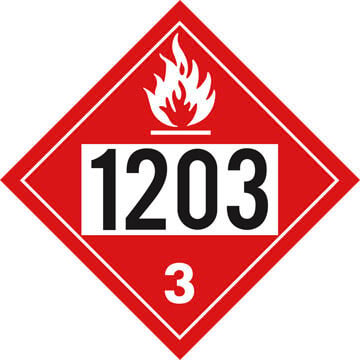When does diesel fuel require placards?
Confusion arises for diesel in first determining if it is regulated or not.
When transporting diesel fuel, many often wonder if placarding is required. As is the case with many hazardous materials, the placarding requirement is determined largely by the hazard of the material, the quantity of the material being transported, and the type of packaging used. But, confusion arises for diesel in first determining if it is regulated or not.
Bulk and non-bulk packaging explained
First, it’s important to understand the differences between bulk and non-bulk packaging. Bulk packaging has no intermediate form of containment and has a maximum capacity greater than 119 gallons for a liquid hazmat.
Non-bulk packaging has a maximum capacity of 119 gallons or less as a receptacle for a liquid hazmat.
49 CFR 173.150 states that a flammable liquid with a flash point at or above 38 °C (100 °F) that does not meet the definition of any other hazard class may be reclassed as a combustible liquid.
Reclassifying diesel
Diesel fuel is classified as a flammable liquid in the hazardous materials table (§172.101), but in most instances may be reclassified as a combustible liquid if it has a flash point at or above 100º F (38º C).
When diesel is regulated
Whether diesel is regulated largely depends on the type of packaging. Generally, combustible liquids such as diesel are not subject to the HMR when in non-bulk packaging. Therefore, when diesel is transported in non-bulk packaging, a placard is not required.However, when diesel is transported in bulk packaging, it is regulated and does require placarding.
Placards or no placards
The types of packaging that fall within bulk packaging and non-bulk packaging can be confusing. The capacity of the packaging (whether over 119 gallons or 119 gallons or less) dictates the requirements. See the following examples:
| Type of Diesel Packaging | Bulk or Non-Bulk | Placard |
|---|---|---|
| 3,000-gallon cargo tank | Bulk | Yes |
| 55-gallon drum | Non-Bulk | No |
| 200-gallon Intermediate bulk container (IBC) | Bulk | Yes |
| 110-gallon tote | Non-Bulk | No |
| 120-gallon portable tank | Bulk | Yes |
J. J. Keller offers an unbeatable selection of hazmat placards in a variety of styles and legends to help you meet DOT placarding requirements.



